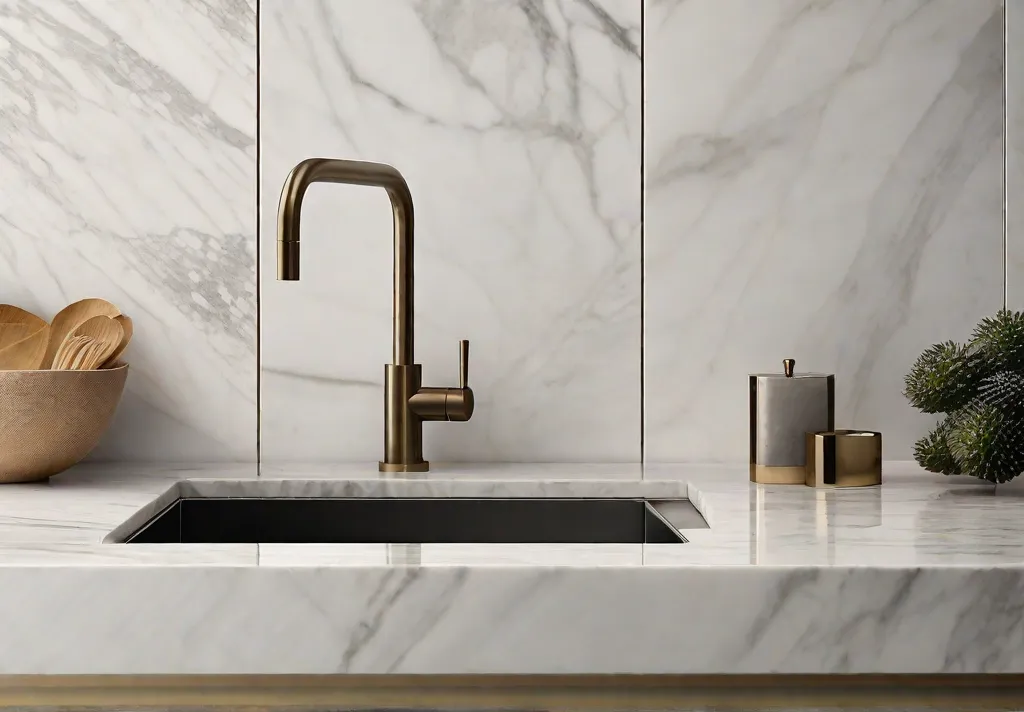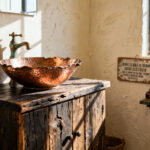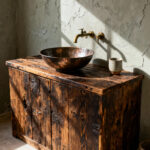A kitchen remodel can breathe new life into your home, transforming the space into an inviting culinary haven that meets aesthetic and functional needs. The oft-overlooked countertops play a leading role in this makeover, serving as a focal point that sets the tone for the entire decor.
Today’s countertop materials offer endless possibilities, from gleaming Granite and sleek stainless steel to eco-friendly paperstone and retro terrazzo. However, the selection process can quickly become overwhelming with so many options to evaluate.
Through vivid descriptions and practical advice, this article will guide you through 12 eye-catching countertop choices that can elevate your kitchen to new stylish heights while suiting your lifestyle. We’ll delve into each material’s durability, maintenance needs, and design potential so you can make an informed decision when investing in this vital surface.
The Allure of Natural Stone
Nature’s elegance shines through dazzling natural stone countertops that infuse the kitchen with organic warmth and intricate artistry.
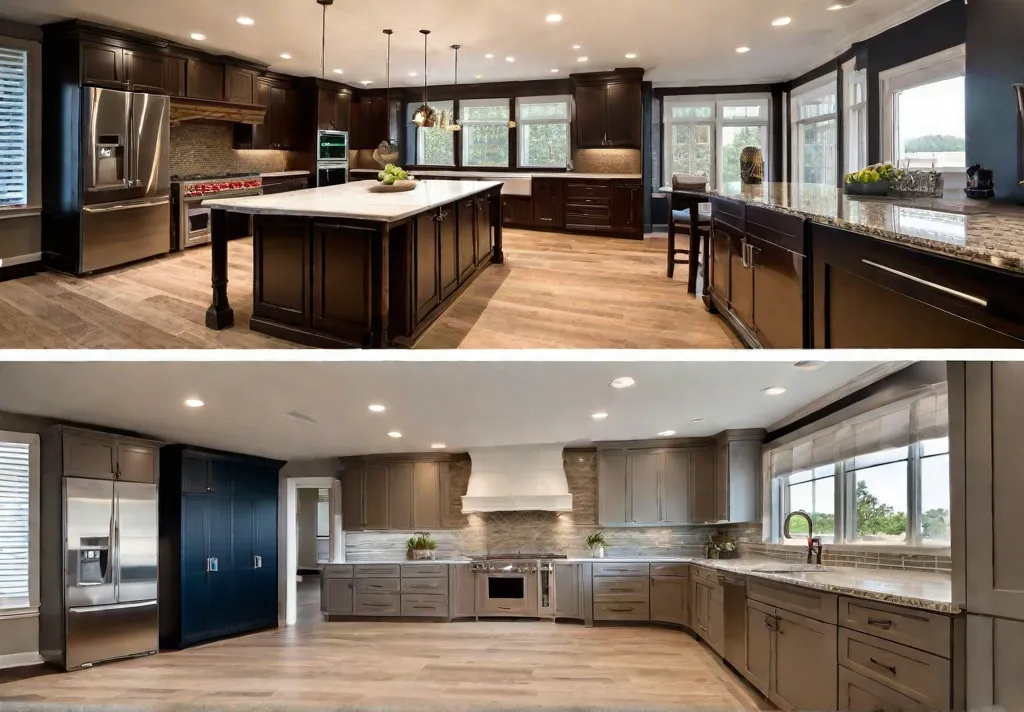
Granite: The Gold Standard
Revered as the gold countertops standard, Granite brings exceptional durability and beguiling beauty to kitchen spaces. Composed of rugged quartz, shimmering mica, and other minerals, Granite’s crystalline structure appears lit from within, the flecks capturing and reflecting light.
Beyond its aesthetic virtues, Granite withstands scratches, stains, and heat with aplomb thanks to its density and water resistance. Granite requires little maintenance, needing only regular cleaning and periodic resealing. Home chefs can directly place hot pots and pans on its surface without worry.
With earth-toned neutrals, vibrant jewel tones, and intriguing black and white patterns, Granite offers endless variety to match any decor. Designers often mix Granite with metal or wood accents to highlight its natural splendor.
Marble: Timeless Sophistication
The epitome of elegance, marble countertops introduce a refined and timeless beauty to the kitchen. Artisans and architects have prized polished marble for its smooth texture and captivating veining for millennia. Available in an array of neutral tones from crisp white to moody gray, marble pairs equally well with traditional mahogany cabinets and sleek modern finishes.
Marble does require some maintenance to retain its patrician appearance. It can stain from oil, wine, and acidic foods as a porous, softer stone. Homeowners can limit this effect through prompt cleaning and application of sealant. When properly cared for, marble countertops will retain their sophistication for decades, only increasing in character.

Soapstone: Seductive Silky Texture
Known for its velvety smooth texture, soapstone captivates homeowners with its alluring feel and sophistication. This metamorphic rock offers a leathered appearance in various shades of charcoal gray with hints of green. The soft patina and subtle gleam give soapstone an organic sensuality, perfect for relaxed rustic or modern spaces.
Dense and nonporous, soapstone stands up well to stains, heat, and scratches. As a bonus, its antibacterial qualities make it perfect for rolling out pastry dough. The smooth surface does require periodic sealing to maintain its dark color. Otherwise, soapstone develops a silvery aged patina some find appealing.
Engineered Stone Offerings
Beyond natural stone, various engineered composites combine ground stone with resin binders to create countertops that rival Granite in durability but with more design flexibility.
Quartz: Consistent Perfection
One of the most popular options today, quartz offers homeowners consistent performance and crisp cosmetics. Manufacturers blend roughly 90% ground quartz with polyresin binders to create a nonporous material impervious to stains and scratches. This makes quartz ideal for busy kitchens prone to spills and drops.
With nature providing inspiration rather than ingredients, quartz patterns prove more uniform than natural stone. However, improved manufacturing techniques now impart realistic variations in texture and pattern. Quartz also accommodates a broader color palette, ranging from solid hues to granite-like designs.
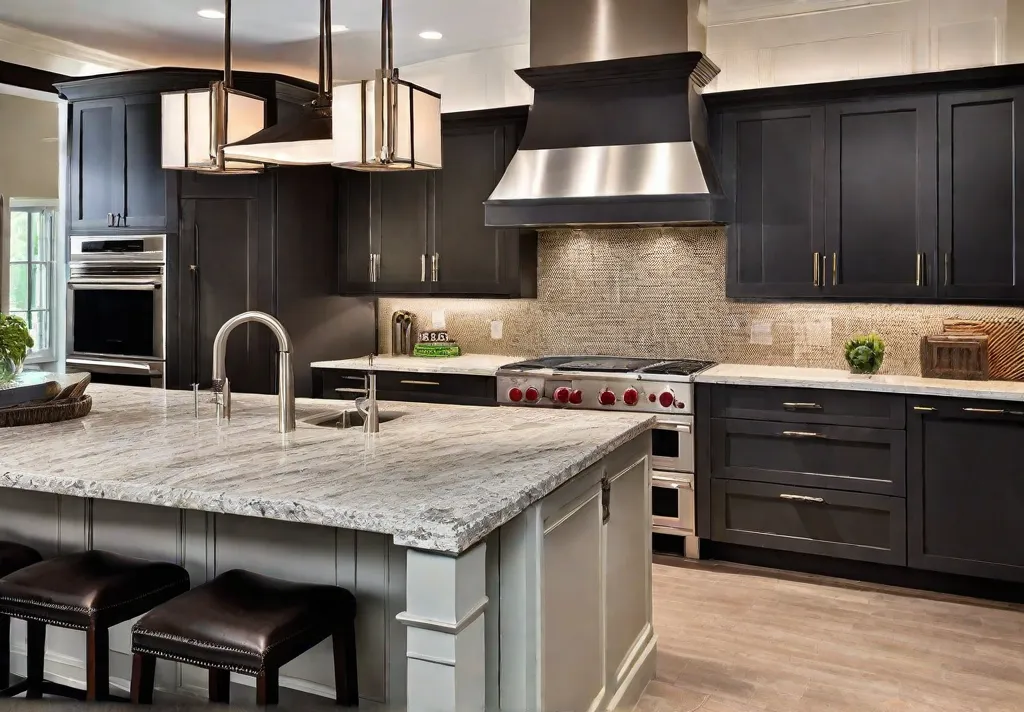
Easy maintenance makes quartz an intelligent choice for low-fuss homeowners. Simple soap and water keep quartz pristine. Unlike Granite, quartz never needs sealing or polishing. Some higher-end quartz products even boast antibacterial properties.
Sintered Stone: Ground Minerals Fused Through Intense Heat
The sintered stone represents an innovative take on engineered countertops. Manufacturers subject natural materials like clay, silica sand, and mineral oxide pigments to extreme heat and pressure to produce nonporous slabs. This intense process fuses the minerals into a highly durable surface while retaining natural beauty.
With performance rivaling quartz, sintered stone offers unique stone-like patterns and earthy textures. Matte finishes provide an organic feel reminiscent of limestone or concrete. Resilient and easy to clean, sintered stone suits modern spaces and withstands busy households. Though a relatively new entry to the countertop arena, this material shows enormous promise.
Metallic Accents
For an edgy industrial vibe, metallic countertops infuse kitchens with contemporary urban chic. Stainless steel and copper offer homeowners sleek, modern aesthetics and rock-solid durability.
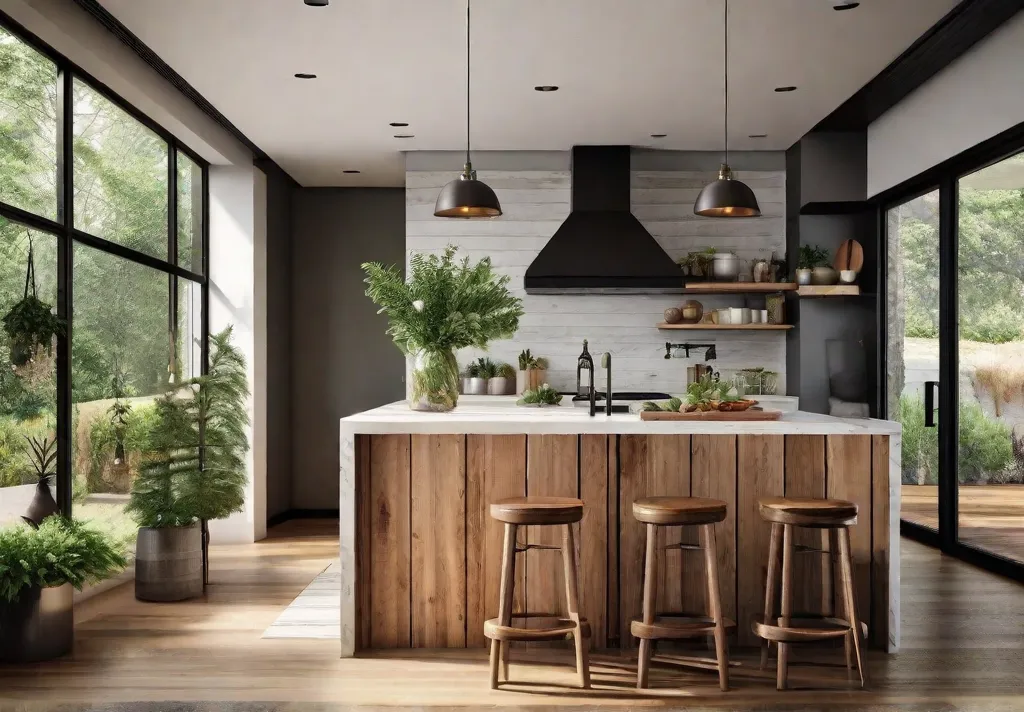
Stainless Steel: A Hygienic Choice
With its sterling contemporary appearance, stainless steel injects an industrial modern aesthetic into kitchen spaces. The lustrous metallic surface pairs well with glass tile, concrete floors, and pops of color for an urban loft vibe. Compared to traditional countertop materials, stainless steel conveys an edgy, artful impression.
But beyond its hip cosmetics, stainless steel delivers exceptional performance thanks to its nonporous structure. Resistant to heat, scratches, and stains, stainless steel also discourages bacterial growth. These virtues make it an ideal surface for hygiene-focused cooks. The easy-to-clean material needs only mild soap and water, even for pesky grease stains.
On the downside, stainless steel readily shows smudges, fingerprints, and water spots. Fortunately, these markings wipe away easily. Some homeowners also find the industrial appearance too cold, but warm wood accents can counterbalance this.
Copper: Living Finish
Prized since ancient times for its alluring glow, copper strikes a stylish balance between natural material and contemporary metal. When used as a countertop, copper develops a rich patina over time, exhibiting charming markings that record the life of the kitchen. Soft blues, greens, and browns emerge in alluring organic patterns.
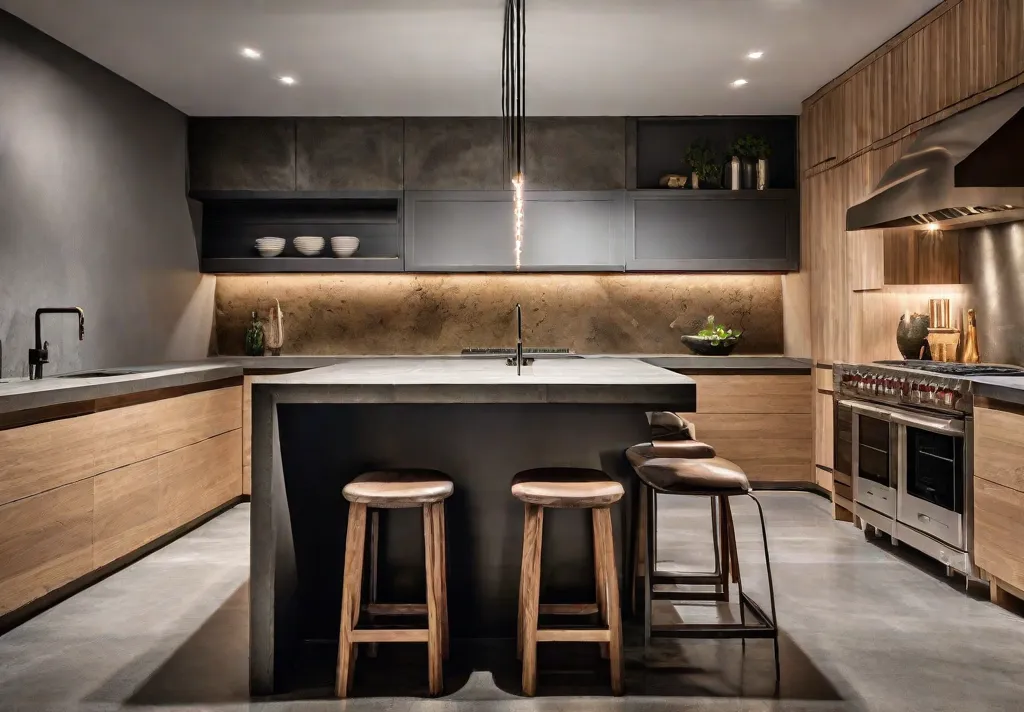
Beyond visual appeal, copper boasts antimicrobial properties that inhibit the growth of dangerous bacteria and viruses. This feature translates into enhanced hygiene, making copper popular in restaurants and health facilities. Copper also brings impressive durability, resisting heat, spills, and impact.
To maintain copper’s warm aesthetic, homeowners apply beeswax every few weeks. This protects the surface and avoids an uneven appearance. Over time, the living finish will stabilize, recording the kitchen’s unique history through color variations.
Artisanal Accents
For a personal touch, artisanal countertops like concrete, wood, and terrazzo infuse spaces with handcrafted charm. Rustic, organic, or retro, these surfaces resonate with artistic flair.
Concrete: Raw Urban Chic
Associated with cutting-edge industrial interiors, concrete countertops introduce a sleek urban chic to contemporary kitchens. Formed within molds, substantial offers designers immense flexibility to create flowing curves, sharp edges, or integrated sinks. Pigments also make color customization possible, from solid hues to mottled effects. The matte texture provides visual depth and tactile appeal.
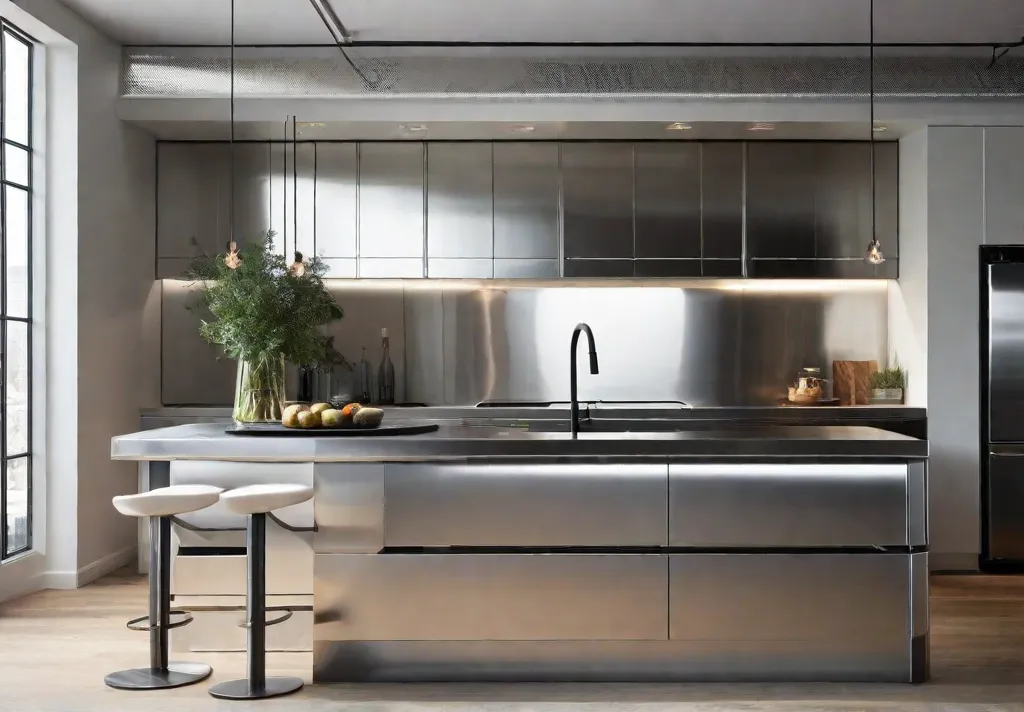
Concrete’s composition lends itself well to heavy use and is impervious to heat, scratches, and stains. However, the porous material requires diligent sealing every three to four months. Some homeowners enjoy the patina concrete acquired over time due to minor abrasions. This weathered aesthetic adds to concrete’s earthy charisma.
Wood: Organic Warmth
Beloved for its natural beauty, butcher block infuses kitchens with organic warmth and texture. Crafted from timber planks, this renewable material wears beautifully over time, developing a rich patina. Various wood species provide a palette of tones from light maple to dark walnut. Wood’s smooth yet tactile feel also brings an inviting sensory element to food preparation.
Despite its welcoming appearance, wood offers surprising durability thanks to its hardness and water resistance. Proper maintenance is vital, however. Homeowners should periodically apply food-safe oil to nourish and protect the wood. This enhances longevity while retaining the attractive raw look.

Terrazzo: Retro Artistry
Long popular in commercial spaces, terrazzo countertops now grace modern residential kitchens with artful retro charm. Craftspeople embed marble or glass chips into concrete or resin, then polish to reveal an artistic mosaic surface. Available in earth tones and vibrant hues, terrazzo makes a bold, creative statement.
The eclectic composite material also delivers impressive performance. Dense and nonporous, terrazzo withstands impacts, heat, stains, and scratches. Compared to natural stone, terrazzo requires less sealing and care. For homeowners who appreciate the marriage of artistry and utility, terrazzo strikes the perfect balance.
Sustainable Selections
Eco-conscious homeowners can reduce their environmental impact with countertops made from recycled materials—these innovative green options rival traditional surfaces in beauty and performance.
Recycled Glass: Vibrant Mosaic
Offering an artful, sustainable option, recycled glass countertops keep waste from landfills by repurposing used bottles and jars. Manufacturers combine crushed glass with concrete or resin binders to produce vibrant mosaics. Flecks of emerald, cobalt, and amber create visually striking designs. Customization allows for personalization, too.
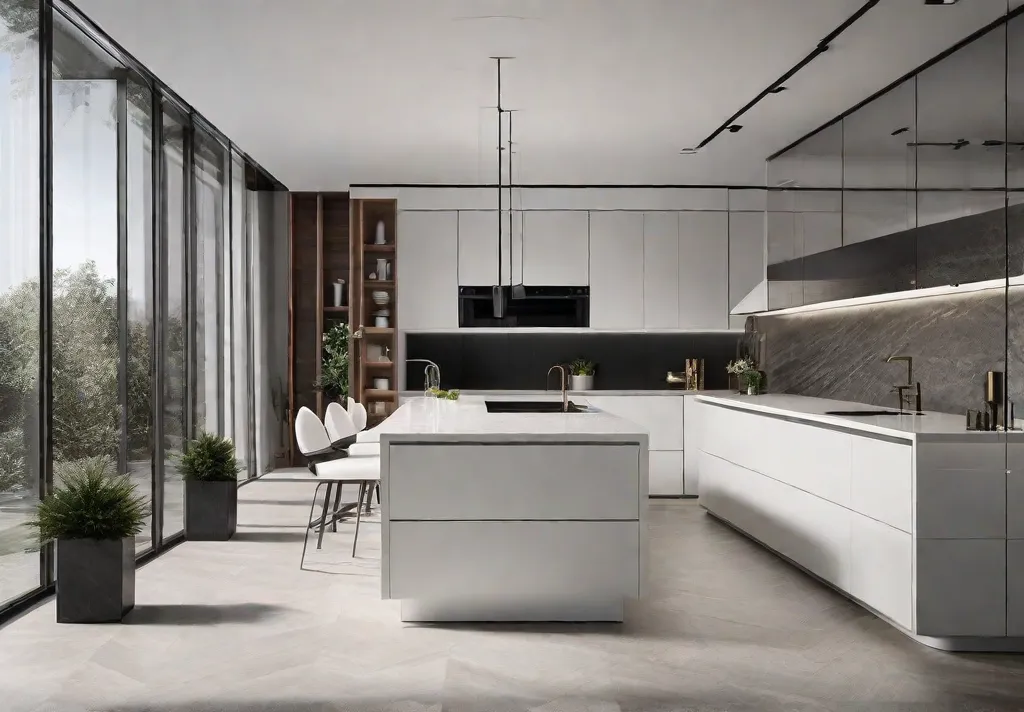
In addition to environmental benefits, recycled glass delivers impressive durability and easy maintenance, similar to quartz. The smooth, nonporous surface resists scratches, stains, and heat. Recycled glass requires only mild soap and water for cleaning. Though more expensive than tile or laminate, it offers homeowners genuine value through sustainability and performance.
Paper Composite: Eco-Friendly Durability
For green-minded homeowners, paper composite offers an innovative countertop made from recycled paper and organic resin. This renewable material rivals quartz and solid surface products in durability while keeping waste out of landfills. More affluent and warmer than recycled glass, paper composite resembles natural stone with realistic textures and hues.
Paper composite resists stains, scratches, and heat with aplomb. It requires only mild soap and water for easy maintenance as a nonporous material. No sealing is necessary! With performance meeting sustainability, paper composite provides homeowners with a durable green countertop option.
Affordable Alternatives
Homeowners watching their budgets can maintain style and quality. Value-oriented countertops like laminate and tile offer beauty and utility at reasonable prices.
Laminate: Realistic Patterns
Often associated with dated formica, modern laminate counters have evolved to offer attractive, realistic patterns rivaling stone. Manufacturers embed Granite, marble, and wood grain images onto resin-saturated papers under high pressure using photographic printing technology. This creates durable surfaces indistinguishable from luxury materials at a fraction of the price.
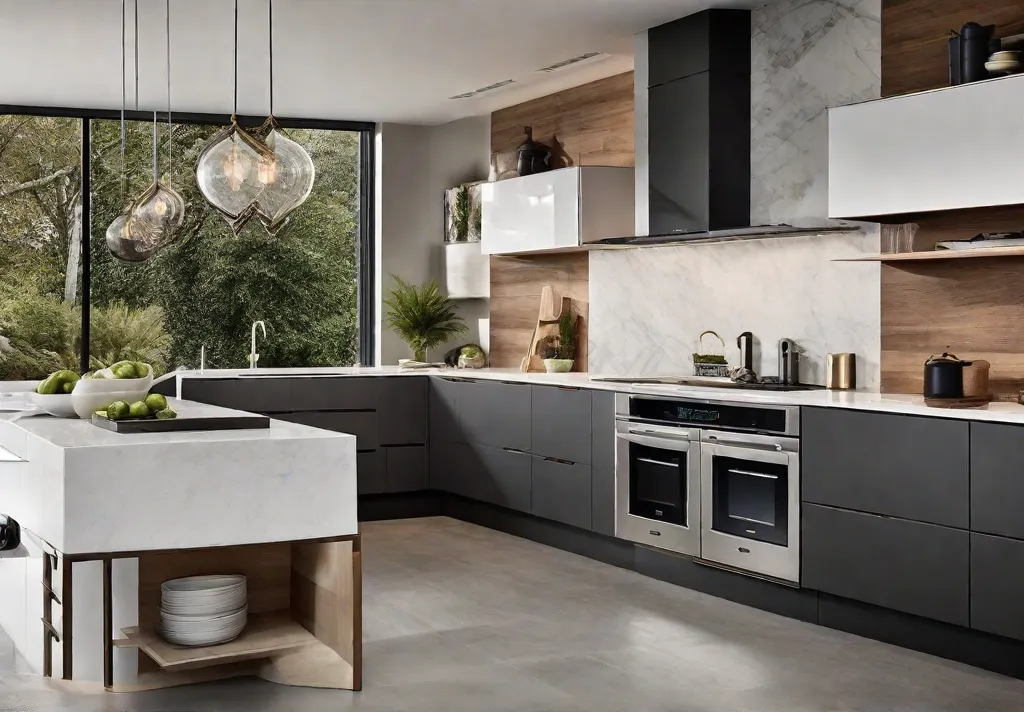
When selecting laminate, opt for thicker gauges with melamine resin for enhanced durability and moisture resistance. Careful use of cutting boards can maintain the illusion of stone for years. Bold, solid colors and retro patterns offer creative alternatives to faux stone. For budget-friendly good looks, few materials beat laminate’s range and realism.
Title: Creative Palette
Valued for millennia by artisans, the versatile tile provides homeowners with an affordable and creative way to customize countertops. Hundreds of styles offer colors, shapes, and textures at every price point. Subway tile, Moroccan patterns, Italian porcelain—the possibilities prove endless. Adventurous DIYers can even install tile themselves.
By nature, nonporous and water-resistant, tile works well in wet areas like kitchens. Its hard-fired composition resists heat, scratches, and stains. However, the grouted joints between tiles can trap debris and moisture if improperly sealed. Homeowners should inspect and maintain grout lines periodically. Beyond this consideration, tile brings personalization and utility within reach.
Choosing Your Countertop Soulmate
When committing to new countertops, carefully evaluate your priorities. Budget, kitchen traffic, and personal style should guide your decision-making. Do you crave sophisticated marble or affordable laminate? Does your active household require indestructible quartz or artisanal terrazzo?
Create a checklist with critical wants and needs. Visit showrooms to experience materials firsthand. Analyze drawbacks and benefits. Combining countertop types can provide visual interest while optimizing function. For example, durable quartz islands withstand heavy prep work, while elegant marble backsplashes inject artistry.
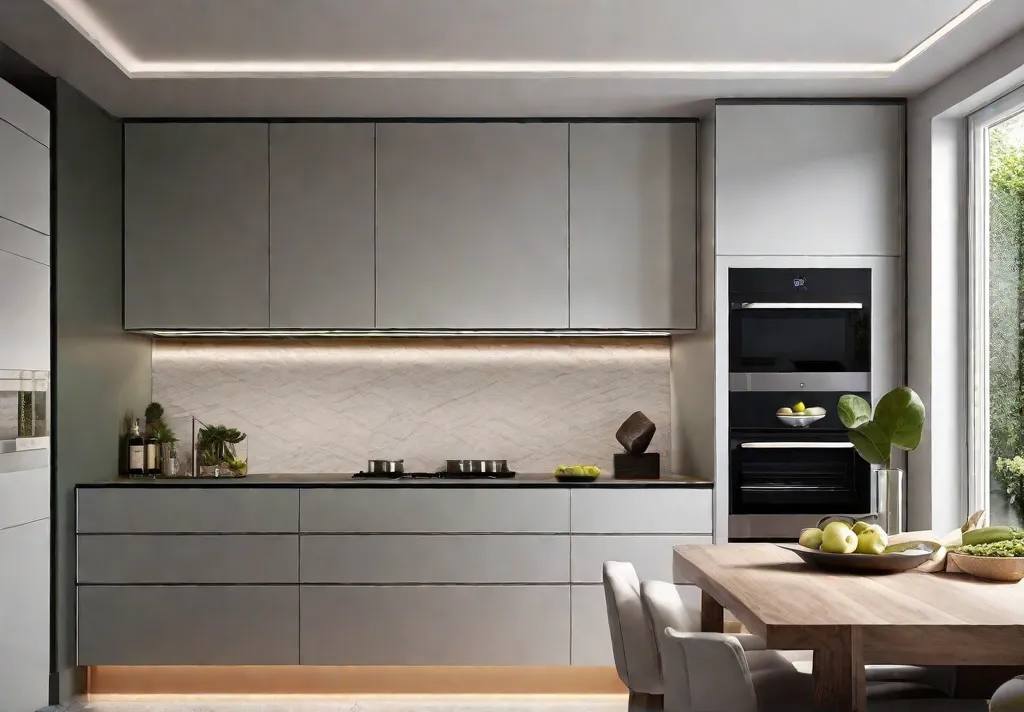
Be wary of trends, opting for options aligned with your tastes. Countertops should reflect who you are. With thoughtful consideration of materials and mindfulness of your family’s lifestyle, you can find the perfect countertop soulmate.
Frequently Asked Questions
What countertop materials are the most durable and scratch-resistant?
Quartz, Granite, ceramic and porcelain tile, stainless steel, and sintered stone all demonstrate exceptional durability and scratch resistance. These materials are ideal for active kitchens prone to heavy usage and drops.
How often do I need to seal my natural stone countertop?
Due to their dense, nonporous nature, soapstone and Granite may never need sealing. Marble and other porous stones should be sealed using a penetrating sealant every 6-12 months. Countertops used heavily with wine or citrus juices may need more frequent sealing.
What are signs my countertops need to be replaced?
Deep scratches, cracks, chips, heat damage, and stains that cannot be removed indicate a countertop replacement may be necessary. If properly maintained, quality countertop materials should provide 20+ years of service.
Can I install a new countertop over my existing one?
In some cases, yes. Laminates and metal can overlay existing surfaces. Natural stone and engineered composites often require complete tear-out for proper support and seamless appearance. Consult an installation pro to assess your options.
